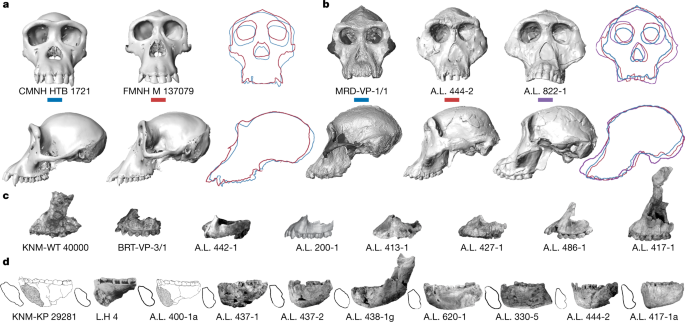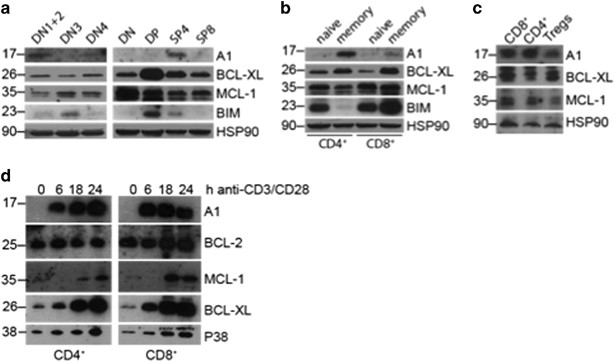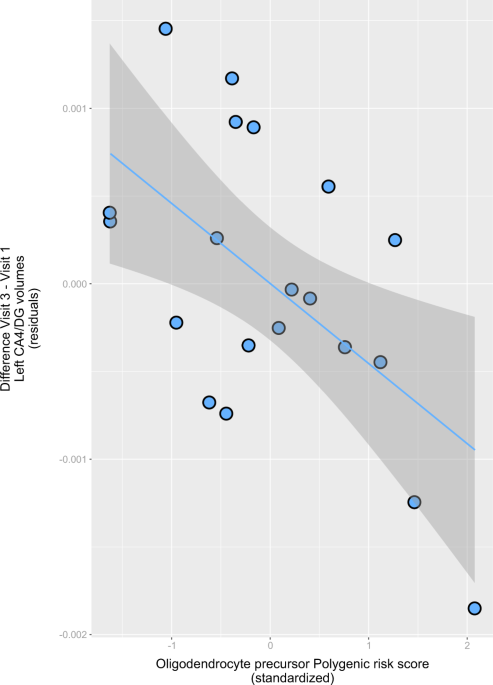
- Select a language for the TTS:
- UK English Female
- UK English Male
- US English Female
- US English Male
- Australian Female
- Australian Male
- Language selected: (auto detect) - EN
Play all audios:
ABSTRACT The naming of _Australopithecus africanus_ in 1925, based on the Taung Child, heralded a new era in human evolutionary studies and turned the attention of the then Eurasian-centric
palaeoanthropologists to Africa, albeit with reluctance. Almost one hundred years later, Africa is recognized as the cradle of humanity, where the entire evolutionary history of our lineage
prior to two million years ago took place—after the _Homo–Pan_ split. This Review examines data from diverse sources and offers a revised depiction of the genus and characterizes its role in
human evolution. For a long time, our knowledge of _Australopithecus_ came from both _A. africanus_ and _Australopithecus afarensis_, and the members of this genus were portrayed as bipedal
creatures that did not use stone tools, with a largely chimpanzee-like cranium, a prognathic face and a brain slightly larger than that of chimpanzees. Subsequent field and laboratory
discoveries, however, have altered this portrayal, showing that _Australopithecus_ species were habitual bipeds but also practised arboreality; that they occasionally used stone tools to
supplement their diet with animal resources; and that their infants probably depended on adults to a greater extent than what is seen in apes. The genus gave rise to several taxa, including
_Homo_, but its direct ancestor remains elusive. In sum, _Australopithecus_ had a pivotal bridging role in our evolutionary history owing to its morphological, behavioural and temporal
placement between the earliest archaic putative hominins and later hominins—including the genus _Homo_. Access through your institution Buy or subscribe This is a preview of subscription
content, access via your institution ACCESS OPTIONS Access through your institution Access Nature and 54 other Nature Portfolio journals Get Nature+, our best-value online-access
subscription $29.99 / 30 days cancel any time Learn more Subscribe to this journal Receive 51 print issues and online access $199.00 per year only $3.90 per issue Learn more Buy this article
* Purchase on SpringerLink * Instant access to full article PDF Buy now Prices may be subject to local taxes which are calculated during checkout ADDITIONAL ACCESS OPTIONS: * Log in * Learn
about institutional subscriptions * Read our FAQs * Contact customer support SIMILAR CONTENT BEING VIEWED BY OTHERS NEW REPTILE SHOWS DINOSAURS AND PTEROSAURS EVOLVED AMONG DIVERSE
PRECURSORS Article 16 August 2023 MORPHOLOGY OF THE MAXILLA INFORMS ABOUT THE TYPE OF PREDATION STRATEGY IN THE EVOLUTION OF ABELISAURIDAE (DINOSAURIA: THEROPODA) Article Open access 06
March 2025 FOSSORIALITY AND EVOLUTIONARY DEVELOPMENT IN TWO CRETACEOUS MAMMALIAMORPHS Article 07 April 2021 REFERENCES * Dart, R. A. _Australopithecus africanus_: the man-ape of South
Africa. _Nature_ 115, 195–199 (1925). A PIONEERING STUDY THAT REPORTED ON THE DISCOVERY OF _AUSTRALOPITHECUS_ AND HERALDED THE IMPORTANCE OF AFRICA IN THE STUDY OF HUMAN EVOLUTION. Article
ADS Google Scholar * Keith, A. Australopithecinæ or Dartians. _Nature_ 159, 377–377 (1947). Article ADS CAS PubMed Google Scholar * Grine, F. E. in _Evolutionary History of the Robust
Australopithecines_ (ed. Grine, F. E.) 509–520 (Aldine de Gruyter, 1988). * Wood, B. A. _Koobi Fora Research Project: Volume 4: Hominid Cranial Remains_ (Clarendon Press, 1991). * Wood, B.
& Constantino, P. _Paranthropus boisei_: fifty years of evidence and analysis. _Am. J. Phys. Anthropol._ 134, 106–132 (2007). Article Google Scholar * Johanson, D. C., White, T. D.
& Coppens, Y. A new species of the genus _Australopithecus_ (primates: Hominidae) from the Pliocene of eastern Africa. _Kirtlandia_ 28, 1–14 (1978). A LANDMARK PAPER THAT DESCRIBED AND
NAMED THE SPECIES _AUSTRALOPITHECUS AFARENSIS_ (THE “LUCY” SPECIES), WHICH GAVE RISE TO MULTIPLE SPECIES INCLUDING _HOMO_. * Asfaw, B. et al. _Australopithecus garhi_: a new species of early
hominid from Ethiopia. _Science_ 284, 629–635 (1999). Article ADS CAS PubMed Google Scholar * Berger, L. R. et al. _Australopithecus sediba_: a new species of _Homo_-like australopith
from South Africa. _Science_ 328, 195–204 (2010). Article ADS CAS PubMed Google Scholar * Haile-Selassie, Y. et al. New species from Ethiopia further expands Middle Pliocene hominin
diversity. _Nature_ 521, 483–488 (2015). Article ADS CAS PubMed Google Scholar * Brunet, M. et al. The first australopithecine 2,500 kilometres west of the Rift Valley (Chad). _Nature_
378, 273–275 (1995). Article ADS CAS PubMed Google Scholar * Leakey, M. G., Feibel, C. S., McDougall, I. & Walker, A. New four-million-year-old hominid species from Kanapoi and
Allia Bay, Kenya. _Nature_ 376, 565–571 (1995). Article ADS CAS PubMed Google Scholar * Clarke, R. J. _Australopithecus prometheus_ was validly named on MLD 1. _Am. J. Phys. Anthropol._
170, 479–481 (2019). Article PubMed Google Scholar * White, T. D., Johanson, D. C. & Kimbel, W. H. _Australopithecus africanus_: its phyletic position reconsidered. _S. Afr. J. Sci._
77, 445–470 (1981). Google Scholar * Kimbel, W. H., Rak, Y. & Johanson, D. C. _The skull of_ _Australopithecus afarensis_ (Oxford University Press, 2004). A MONUMENTAL MONOGRAPH THAT
DESCRIBED AND ANALYSED THE SKULL OF _AUSTRALOPITHECUS AFARENSIS_ AND HOW THE SPECIES RELATED TO OTHER HOMININ TAXA. * Lockwood, C. A. & Tobias, P. V. A large male hominin cranium from
Sterkfontein, South Africa, and the status of _Australopithecus africanus_. _J. Hum. Evol._ 36, 637–685 (1999). Article CAS PubMed Google Scholar * Lockwood, C. A. & Tobias, P. V.
Morphology and affinities of new hominin cranial remains from Member 4 of the Sterkfontein Formation, Gauteng Province, South Africa. _J. Hum. Evol._ 42, 389–450 (2002). THIS PAPER DESCRIBED
AND ANALYSED FOSSIL MATERIAL FROM A KEY SOUTH AFRICAN CAVE AND DELVED INTO MORPHOLOGY, AFFINITIES AND VARIATION IN _AUSTRALOPITHECUS AFRICANUS_. Article PubMed Google Scholar * Grine, F.
E., Delanty, M. M. & Wood, B. A. in _The Paleobiology of Australopithecus_ (eds Reed, K. E., Fleagle, J. G. & Leakey, R. E.) 125–146 (Springer, 2013). * Dart, R. A. The Makapansgat
proto-human _Australopithecus prometheus_. _Am. J. Phys. Anthropol._ 6, 259–284 (1948). Article CAS PubMed Google Scholar * Broom, R. The genera and species of the South African fossil
ape-men. _Am. J. Phys. Anthropol._ 8, 1–14 (1950). Article CAS PubMed Google Scholar * Dart, R. A. A cleft adult mandible and the nine other lower jaw fragments from Makapansgat. _Am. J.
Phys. Anthropol._ 20, 267–286 (1962). Article CAS PubMed Google Scholar * Robinson, J. T. The genera and species of the australopithecinae. _Am. J. Phys. Anthropol._ 12, 181–200 (1954).
Article CAS PubMed Google Scholar * Le Gros Clark, W. E. Hominid characters of the australopithecine dentition. _J. R. Anthropol. Inst. G. B. Irel._ 80, 37–54 (1950). Google Scholar *
Le Gros Clark, W. E. _The Fossil Evidence for Human Evolution: an Introduction to the Study of Paleoanthropology_ (University of Chicago Press, 1964). * Lockwood, C. A. Sexual dimorphism in
the face of _Australopithecus africanus_. _Am. J. Phys. Anthropol._ 108, 97–127 (1999). Article CAS PubMed Google Scholar * Robinson, J. T. _Homo ‘habilis’_ and the Australopithecines.
_Nature_ 205, 121–124 (1965). Article ADS Google Scholar * Tobias, P. V. _Australopithecus, Homo Habilis_: underestimating intraspecific varia, Tool-using and tool-making. _S. Afr.
Archaeol. Bull._ 20, 167–192 (1965). Article Google Scholar * Ahern, J. C. M. Underestimating intraspecific variation: the problem with excluding Sts 19 from _Australopithecus africanus_.
_Am. J. Phys. Anthropol._ 105, 461–480 (1998). Article CAS PubMed Google Scholar * Wood, B. & Richmond, B. G. Human evolution: taxonomy and paleobiology. _J. Anat._ 197, 19–60
(2000). Article PubMed PubMed Central Google Scholar * de Heinzelin, J. et al. Environment and behavior of 2.5-million-year-old Bouri hominids. _Science_ 284, 625–629 (1999). Article
ADS PubMed Google Scholar * Wood, B. & Boyle, E. K. Hominin taxic diversity: fact or fantasy? _Am. J. Phys. Anthropol._ 159, 37–78 (2016). Article Google Scholar * Spoor, F. The
middle Pliocene gets crowded. _Nature_ 521, 432–433 (2015). Article ADS CAS PubMed Google Scholar * Spoor, F., Leakey, M. G. & O’Higgins, P. Middle Pliocene hominin diversity:
_Australopithecus deyiremeda_ and _Kenyanthropus platyops_. _Philos. Trans. R. Soc. B_ 371, 20150231 (2016). Article Google Scholar * Leakey, M. G. et al. New hominin genus from eastern
Africa shows diverse middle Pliocene lineages. _Nature_ 410, 433–440 (2001). A CRUCIAL ARTICLE THAT NAMED AND CHARACTERIZED A NEW GENUS (_KENYANTHROPUS_) AND SPECIES (_PLATYOPS_) ON THE
BASIS OF DISCOVERIES IN KENYA, SUGGESTING THAT HOMININS WERE MORE DIVERSE IN THE MIDDLE PLIOCENE THAN WAS PREVIOUSLY THOUGHT. Article ADS CAS PubMed Google Scholar * White, T. Early
hominids–diversity or distortion? _Science_ 299, 1994–1997 (2003). Article CAS PubMed Google Scholar * Spoor, F., Leakey, M. G. & Leakey, L. N. Hominin diversity in the Middle
Pliocene of eastern Africa: the maxilla of KNM-WT 40000. _Philos. Trans. R. Soc. B_ 365, 3377–3388 (2010). Article Google Scholar * Kimbel, W. et al. Was _Australopithecus anamensis_
ancestral to _A. afarensis_? A case of anagenesis in the hominin fossil record. _J. Hum. Evol._ 51, 134–152 (2006). A KEY STUDY THAT ANALYSED THE COMBINED _AUSTRALOPITHECUS AFARENSIS_ AND
_AUSTRALOPITHECUS ANAMENSIS_ HYPODIGM AND PROPOSED A PHYLOGENETIC PROXIMITY BETWEEN THE TWO SPECIES USING AN ANAGENETIC MODEL. Article PubMed Google Scholar * Kimbel, W. H. in _Handbook
of Paleoanthropology_ (eds Henke, W. & Tattersall, I.) 1539–1573 (Springer, 2015). * Haile-Selassie, Y., Melillo, S. M., Vazzana, A., Benazzi, S. & Ryan, T. M. A 3.8-million-year-old
hominin cranium from Woranso-Mille, Ethiopia. _Nature_ 573, 214–219 (2019). Article ADS CAS PubMed Google Scholar * Ward, C. V. in _The Paleobiology of_ _Australopithecus_ (eds Reed,
K. E., Fleagle, J. G. & Leakey, R. E.) 235–245 (Springer, 2013). A SYNTHESIS OF THE POSTURAL AND LOCOMOTOR ADAPTATIONS OF THE MANY TAXA IN _AUSTRALOPITHECUS_ AND IMPLICATIONS FOR THE
BROADER UNDERSTANDING OF EARLY HOMININ EVOLUTION. * Haile-Selassie, Y. Phylogeny of early _Australopithecus_: new fossil evidence from the Woranso-Mille (central Afar, Ethiopia). _Philos.
Trans. R. Soc. B_ 365, 3323–3331 (2010). Article Google Scholar * Haile-Selassie, Y. et al. A new hominin foot from Ethiopia shows multiple Pliocene bipedal adaptations. _Nature_ 483,
565–569 (2012). Article ADS CAS PubMed Google Scholar * Haile-Selassie, Y., Melillo, S. M. & Su, D. F. The Pliocene hominin diversity conundrum: do more fossils mean less clarity?
_Proc. Natl Acad. Sci. USA_ 113, 6364–6371 (2016). THIS PAPER DISCUSSED THE KEY ISSUE OF HOMININ DIVERSITY IN THE MIDDLE PLIOCENE IN THE LIGHT OF DISCOVERIES FROM THE WORANSO-MILLE SITE IN
AFAR, ETHIOPIA. Article ADS CAS PubMed PubMed Central Google Scholar * White, T. D. et al. Asa Issie, Aramis and the origin of _Australopithecus_. _Nature_ 440, 883–889 (2006). Article
ADS CAS PubMed Google Scholar * Pickering, R. et al. _Australopithecus sediba_ at 1.977 Ma and implications for the origins of the genus _Homo_. _Science_ 333, 1421–1423 (2011).
Article ADS CAS PubMed Google Scholar * White, T. D. et al. _Ardipithecus ramidus_ and the paleobiology of early hominids. _Science_ 326, 64–86 (2009). THIS AND OTHER RELATED PAPERS IN
THE SAME VOLUME DESCRIBED THE IMPORTANCE AND ROLE OF _ARDIPITHECUS RAMIDUS_ IN HUMAN EVOLUTION AND PROVIDED A DETAILED ACCOUNT OF ITS PALEOBIOLOGY. Article ADS Google Scholar * Villmoare,
B. et al. Early _Homo_ at 2.8 Ma from Ledi-Geraru, Afar, Ethiopia. _Science_ 347, 1352–1355 (2015). A PAPER DESCRIBING AND ANALYSING THE EARLIEST EVIDENCE FOR THE GENUS _HOMO_ DATING BACK
TO 2.8 MA. Article ADS CAS PubMed Google Scholar * Kimbel, W. H. & Delezene, L. K. “Lucy” redux: a review of research on _Australopithecus afarensis_. _Am. J. Phys. Anthropol._ 140,
2–48 (2009). Article PubMed Google Scholar * Semaw, S. et al. Early Pliocene hominids from Gona, Ethiopia. _Nature_ 433, 301–305 (2005). Article ADS CAS PubMed Google Scholar * Du,
A., Rowan, J., Wang, S. C., Wood, B. A. & Alemseged, Z. Statistical estimates of hominin origination and extinction dates: a case study examining the _Australopithecus
anamensis_–_afarensis_ lineage. _J. Hum. Evol._ 138, 102688 (2020). Article PubMed Google Scholar * Bobe, R. & Wood, B. Estimating origination times from the early hominin fossil
record. _Evol. Anthropol._ 31, 92–102 (2021). Article PubMed Google Scholar * Wood, B. & Harrison, T. The evolutionary context of the first hominins. _Nature_ 470, 347–352 (2011).
Article ADS CAS PubMed Google Scholar * Strait, D. S. in _The Paleobiology of Australopithecus_ (eds Reed, K. E., Fleagle, J. G. & Leakey, R. E.) 183–191 (Springer, 2013). *
Granger, D. E. et al. Cosmogenic nuclide dating of _Australopithecus_ at Sterkfontein, South Africa. _Proc. Natl Acad. Sci. USA_ 119, e2123516119 (2022). Article CAS PubMed PubMed Central
Google Scholar * Rak, Y., Ginzburg, A. & Geffen, E. Gorilla-like anatomy on _Australopithecus afarensis_ mandibles suggests _Au. afarensis_ link to robust australopiths. _Proc. Natl
Acad. Sci. USA_ 104, 6568–6572 (2007). Article ADS CAS PubMed PubMed Central Google Scholar * Braga, J. et al. Cochlear shape distinguishes southern African early hominin taxa with
unique auditory ecologies. _Sci. Rep._ 11, 17018 (2021). Article ADS CAS PubMed PubMed Central Google Scholar * Crouch, N. M. A., Edie, S. M., Collins, K. S., Bieler, R. &
Jablonski, D. Calibrating phylogenies assuming bifurcation or budding alters inferred macroevolutionary dynamics in a densely sampled phylogeny of bivalve families. _Proc. R. Soc. B_ 288,
20212178 (2021). Article PubMed PubMed Central Google Scholar * Pearson, P. N. Speciation and extinction asymmetries in paleontological phylogenies: evidence for evolutionary progress.
_Paleobiology_ 24, 305–335 (1998). Google Scholar * Mongle, C. S., Strait, D. S. & Grine, F. E. Expanded character sampling underscores phylogenetic stability of _Ardipithecus ramidus_
as a basal hominin. _J. Hum. Evol._ 131, 28–39 (2019). Article PubMed Google Scholar * Lockwood, C. in _The Paleobiology of_ _Australopithecus_ (eds Reed, K. E., Fleagle, J. G. &
Leakey, R. E.) 175–182 (Springer, 2013). * Raymo, M. E. The initiation of Northern Hemisphere glaciation. _Annu. Rev. Earth Planet. Sci._ 22, 353–383 (1994). Article ADS Google Scholar *
Liddy, H. M., Feakins, S. J. & Tierney, J. E. Cooling and drying in northeast Africa across the Pliocene. _Earth Planet. Sci. Lett._ 449, 430–438 (2016). Article ADS CAS Google
Scholar * Boisserie, J.-R., Fisher, R. E., Lihoreau, F. & Weston, E. M. Evolving between land and water: key questions on the emergence and history of the Hippopotamidae
(Hippopotamoidea, Cetancodonta, Cetartiodactyla). _Biol. Rev._ 86, 601–625 (2011). Article PubMed Google Scholar * Rowan, J. & Reed, K. Endemism and dispersal in East African bovidae
from thelate Miocene through the recent. _J. Vertebr. Paleontol._ 33, 201 (2013). Google Scholar * Lorenzen, E. D., Heller, R. & Siegismund, H. R. Comparative phylogeography of African
savannah ungulates. _Mol. Ecol._ 21, 3656–3670 (2012). Article CAS PubMed Google Scholar * Bobe, R., Manthi, F. K., Ward, C. V., Plavcan, J. M. & Carvalho, S. The ecology of
_Australopithecus anamensis_ in the early Pliocene of Kanapoi, Kenya. _J. Hum. Evol._ 140, 102717 (2020). Article PubMed Google Scholar * Dumouchel, L., Bobe, R., Wynn, J. G. & Barr,
W. A. The environments of _Australopithecus anamensis_ at Allia Bay, Kenya: a multiproxy analysis of early Pliocene Bovidae. _J. Hum. Evol._ 151, 102928 (2021). Article PubMed Google
Scholar * Behrensmeyer, A. K. & Reed, K. E.in _The Paleobiology of Australopithecus_ (eds Reed, K. E., Fleagle, J. G. & Leakey, R. E.) 41–60 (Springer, 2013). * Fillion, E. N.,
Harrison, T. & Kwekason, A. A nonanalog Pliocene ungulate community at Laetoli with implications for the paleoecology of _Australopithecus afarensis_. _J. Hum. Evol._ 167, 103182 (2022).
Article PubMed Google Scholar * Campisano, C. J. _Tephrostratigraphy and Hominin Paleoenvironments of the Hadar Formation, Afar Depression, Ethiopia._ PhD thesis, Rutgers Univ.
https://doi.org/10.7282/T3NS0V99 (2007). * Alemseged, Z. et al. Fossils from Mille-Logya, Afar, Ethiopia, elucidate the link between Pliocene environmental changes and _Homo_ origins. _Nat.
Commun._ 11, 2480 (2020). Article ADS CAS PubMed PubMed Central Google Scholar * Geraads, D. et al. Plio-Pleistocene mammals from Mille-Logya, Ethiopia, and the post-Hadar faunal
change. _J. Quat. Sci._ 36, 1073–1089 (2021). Article Google Scholar * DiMaggio, E. N. et al. Late Pliocene fossiliferous sedimentary record and the environmental context of early _Homo_
from Afar, Ethiopia. _Science_ 347, 1355–1359 (2015). Article ADS CAS PubMed Google Scholar * deMenocal, P. B. Plio-Pleistocene African climate. _Science_ 270, 53–59 (1995). Article
ADS CAS PubMed Google Scholar * deMenocal, P. B. African climate change and faunal evolution during the Pliocene–Pleistocene. _Earth Planet. Sci. Lett._ 220, 3–24 (2004). Article ADS
CAS Google Scholar * Vrba, E. S. in _Paleoclimate and Evolution, with Emphasis on Human Origins_ (eds Vrba, E. S., Denton, G. H., Partridge, T. C. & Burckle, L. H.) 197–448 (Yale
University Press, 1995). * Joordens, J. C. A., Feibel, C. S., Vonhof, H. B., Schulp, A. S. & Kroon, D. Relevance of the eastern African coastal forest for early hominin biogeography. _J.
Hum. Evol._ 131, 176–202 (2019). Article PubMed Google Scholar * Dart, R. The osteodontokeratic culture of _Australopithecus prometheus_. _Transvaal Museum Memoirs_ 10, 87–101 (1957).
Google Scholar * Ungar, P. S. & Sponheimer, M. The diets of early hominins. _Science_ 334, 190–193 (2011). Article ADS CAS PubMed Google Scholar * Teaford, M. F. & Ungar, P. S.
Diet and the evolution of the earliest human ancestors. _Proc. Natl Acad. Sci. USA_ 97, 13506–13511 (2000). Article ADS CAS PubMed PubMed Central Google Scholar * Grine, F. E., Ungar,
P. S. & Teaford, M. F. Was the early Pliocene hominin _‘Australopithecus’ anamensis_ a hard object feeder? _S. Afr. J. Sci_ 102, 301–310 (2006). Google Scholar * Levin, N. E.,
Haile-Selassie, Y., Frost, S. R. & Saylor, B. Z. Dietary change among hominins and cercopithecids in Ethiopia during the early Pliocene. _Proc. Natl Acad. Sci. USA_ 112, 12304–12309
(2015). Article ADS CAS PubMed PubMed Central Google Scholar * Alemseged, Z. Stable isotopes serving as a checkpoint. _Proc. Natl Acad. Sci. USA_ 112, 12232–12233 (2015). Article ADS
CAS PubMed PubMed Central Google Scholar * Wynn, J. G. et al. Diet of _Australopithecus afarensis_ from the Pliocene Hadar Formation, Ethiopia. _Proc. Natl Acad. Sci. USA_ 110,
10495–10500 (2013). Article ADS CAS PubMed PubMed Central Google Scholar * Sponheimer, M. et al. Isotopic evidence of early hominin diets. _Proc. Natl Acad. Sci. USA_ 110, 10513–10518
(2013). Article ADS CAS PubMed Central Google Scholar * McPherron, S. P. et al. Evidence for stone-tool-assisted consumption of animal tissues before 3.39 million years ago at Dikika,
Ethiopia. _Nature_ 466, 857–860 (2010). Article ADS CAS PubMed Google Scholar * Alemseged, Z. In _First humans: Who was who, who did what, where and when?_ [English] (eds Coppens, Y.
& Vialet, A.) 101–122 (CNRS Editions, 2021). * Harmand, S. et al. 3.3-million-year-old stone tools from Lomekwi 3, West Turkana, Kenya. _Nature_ 521, 310–315 (2015). A STUDY ON THE
DISCOVERY OF THE EARLIEST STONE TOOLS DATING TO 3.3 MA, WHICH LED TO THE NAMING OF THE LOMEKIWIAN—A STONE-TOOL-TECHNOLOGY STAGE BEFORE THE OLDOWAN. Article ADS CAS PubMed Google Scholar
* Skinner, M. M. et al. Human-like hand use in _Australopithecus africanus_. _Science_ 347, 395–399 (2015). Article ADS CAS PubMed Google Scholar * Granger, D. E. et al. New
cosmogenic burial ages for Sterkfontein Member 2 _Australopithecus_ and Member 5 Oldowan. _Nature_ 522, 85–88 (2015). Article ADS CAS PubMed Google Scholar * Thompson, J. C., Carvalho,
S., Marean, C. W. & Alemseged, Z. Origins of the human predatory pattern: the transition to large-animal exploitation by early hominins. _Curr. Anthropol._ 60, 1–23 (2019). Article
Google Scholar * Bonnefille, R., Potts, R., Chalie, F., Jolly, D. & Peyron, O. High-resolution vegetation and climate change associated with Pliocene _Australopithecus afarensis_.
_Proc. Natl Acad. Sci. USA_ 101, 12125–12129 (2004). Article ADS CAS PubMed PubMed Central Google Scholar * Lovejoy, C. O. The natural history of human gait and posture part 3: the
knee. _Gait Posture_ 25, 325–341 (2007). Article PubMed Google Scholar * Lovejoy, C. O. Evolution of human walking. _Sci. Am._ 259, 118–125 (1988). Article ADS CAS PubMed Google
Scholar * Day, M. H. & Wickens, E. H. Laetoli Pliocene hominid footprints and bipedalism. _Nature_ 286, 385–387 (1980). Article ADS Google Scholar * White, T. D. Evolutionary
implications of Pliocene hominid footprints. _Science_ 208, 175–176 (1980). Article ADS CAS PubMed Google Scholar * Stern, J. T. Jr & Susman, R. L. The locomotor anatomy of
_Australopithecus afarensis_. _Am. J. Phys. Anthropol._ 60, 279–317 (1983). Article PubMed Google Scholar * Susman, R. L., Jack, T., Stern, J. & Jungers, W. L. Arboreality and
bipedality in the Hadar hominids. _Folia Primatol._ 43, 113–156 (1984). Article CAS Google Scholar * Aiello, L. & Dean, C. _An Introduction to Human Evolutionary Anatomy_ (Academic
Press, 1990). * Stern, J. T. Climbing to the top: a personal memoir of _Australopithecus afarensis_. _Am. J. Phys. Anthropol._ 60, 279–317 (1983). PubMed Google Scholar * Ward, C. V.
Interpreting the posture and locomotion of _Australopithecus afarensis_: where do we stand? _Am. J. Phys. Anthropol._ 119, 185–215 (2002). Article Google Scholar * Senut, B. & Tardieu,
C. in _Ancestors: the Hard Evidence_ (ed. Delson, E.) 193–201 (Alan R. Liss, 1985). * McHenry, H. M. Biomechanical interpretation of the early hominid hip. _J. Hum. Evol._ 4, 343–355
(1975). Article Google Scholar * Lovejoy, C. O. Reexamining human origins in light of _Ardipithecus ramidus_. _Science_ 326, 74–74e8 (2009). Article ADS Google Scholar * Lovejoy, C. O.,
Suwa, G., Spurlock, L., Asfaw, B. & White, T. D. The pelvis and femur of _Ardipithecus ramidus_: the emergence of upright walking. _Science_ 326, 71–71e6 (2009). Article ADS Google
Scholar * Stern, J. T. Climbing to the top: a personal memoir of _Australopithecus afarensis_. _Evol. Anthropol._ 9, 113–133 (2000). Article Google Scholar * Jungers, W. L. Lucy’s limbs:
skeletal allometry and locomotion in _Australopithecus afarensis_. _Nature_ 297, 676–678 (1982). Article ADS Google Scholar * Tardieu, C. in _Current Perspectives in Primate Biology_ (eds
Taub, D. M. & King, F. A.) 182–192 (Van Nostrand Reinhold, 1986). * Green, D. J. & Alemseged, Z. _Australopithecus afarensis_: scapular ontogeny, function, and the role of climbing
in human evolution. _Science_ 338, 514–517 (2012). THIS STUDY SHOWED THE IMPORTANCE OF CHARACTER PLASTICITY DURING ONTOGENY AND HOW THAT RELATES TO LOCOMOTOR ADAPTATION IN LIVING APES AND
EARLY HOMININS ON THE BASIS OF THE SCAPULA, AND HELPED TO DOCUMENT THE IMPORTANCE OF ARBOREALITY IN _AUSTRALOPITHECUS_. Article ADS CAS PubMed Google Scholar * Latimer, B., Ohman, J. C.
& Lovejoy, C. O. Talocrural joint in African hominoids: implications for Australopithecus afarensis. _Am. J. Phys. Anthropol._ 74, 155–175 (1987). Article CAS PubMed Google Scholar
* Latimer, B. In _The origin of bipedality in Hominids_ [English]. (eds Coppens, Y. & Senut, B.) 169–176 (CNRS, 1991). * Lovejoy, C. O., Heiple, K. G. & Burstein, A. H. The gait of
_Australopithecus_. _Am. J. Phys. Anthropol._ 38, 757–779 (1973). Article CAS PubMed Google Scholar * Ward, C. V., Kimbel, W. H. & Johanson, D. C. Complete fourth metatarsal and
arches in the foot of _Australopithecus afarensis_. _Science_ 331, 750–753 (2011). Article ADS CAS PubMed Google Scholar * Rolian, C., Lieberman, D. E., Hamill, J., Scott, J. W. &
Werbel, W. Walking, running and the evolution of short toes in humans. _J. Exp. Biol._ 212, 713–721 (2009). Article PubMed Google Scholar * Holowka, N. B. & Lieberman, D. E.
Rethinking the evolution of the human foot: insights from experimental research. _J. Exp. Biol._ 221, jeb174425 (2018). Article PubMed Google Scholar * Larson, S. Did australopiths climb
trees? _Science_ 338, 478–479 (2012). Article ADS CAS PubMed Google Scholar * Richmond, B. G. Biomechanics of phalangeal curvature. _J. Hum. Evol._ 53, 678–690 (2007). Article PubMed
Google Scholar * Green, D. J. Ontogeny of the hominoid scapula: the influence of locomotion on morphology: ontogeny of hominoid scapular morphology and locomotion. _Am. J. Phys. Anthropol._
152, 239–260 (2013). PubMed Google Scholar * DeSilva, J. M., Gill, C. M., Prang, T. C., Bredella, M. A. & Alemseged, Z. A nearly complete foot from Dikika, Ethiopia and its
implications for the ontogeny and function of _Australopithecus afarensis_. _Sci. Adv._ 4, eaar7723 (2018). Article ADS PubMed PubMed Central Google Scholar * Green, D. J., Gordon, A.
D. & Richmond, B. G. Limb-size proportions in _Australopithecus afarensis_ and _Australopithecus africanus_. _J. Hum. Evol._ 52, 187–200 (2007). Article PubMed Google Scholar *
Prabhat, A. M. et al. Homoplasy in the evolution of modern human-like joint proportions in _Australopithecus afarensis_. _eLife_ 10, e65897 (2021). Article CAS PubMed PubMed Central
Google Scholar * Spoor, F., Wood, B. & Zonneveld, F. Implications of early hominid labyrinthine morphology for evolution of human bipedal locomotion. _Nature_ 369, 645–648 (1994).
Article ADS CAS PubMed Google Scholar * Alemseged, Z. et al. A juvenile early hominin skeleton from Dikika, Ethiopia. _Nature_ 443, 296–301 (2006). Article ADS CAS PubMed Google
Scholar * Kivell, T. L., Davenport, R., Hublin, J.-J., Thackeray, J. F. & Skinner, M. M. Trabecular architecture and joint loading of the proximal humerus in extant hominoids, Ateles,
and _Australopithecus africanus_. _Am. J. Phys. Anthropol._ 167, 348–365 (2018). Article PubMed Google Scholar * Dunmore, C. J. et al. The position of _Australopithecus sediba_ within
fossil hominin hand use diversity. _Nat. Ecol. Evol._ 4, 911–918 (2020). Article PubMed Google Scholar * Doran, D. M. Ontogeny of locomotion in mountain gorillas and chimpanzees. _J. Hum.
Evol._ 32, 323–344 (1997). Article CAS PubMed Google Scholar * Asfaw, B. et al. _Australopithecus garhi_: a new species of early hominid from Ethiopia. _Science_ 284, 629–635 (1999).
Article ADS CAS PubMed Google Scholar * Churchill, S. E. et al. The upper limb of _Australopithecus sediba_. _Science_ 340, 1233477 (2013). Article PubMed Google Scholar * Kivell, T.
L., Kibii, J. M., Churchill, S. E., Schmid, P. & Berger, L. R. _Australopithecus sediba_ hand demonstrates mosaic evolution of locomotor and manipulative abilities. _Science_ 333,
1411–1417 (2011). Article ADS CAS PubMed Google Scholar * McNutt, E. J. et al. Footprint evidence of early hominin locomotor diversity at Laetoli, Tanzania. _Nature_ 600, 468–471
(2021). Article ADS CAS PubMed PubMed Central Google Scholar * DeSilva, J. M. et al. The lower limb and mechanics of walking in _Australopithecus sediba_. _Science_ 340, 1232999
(2013). Article PubMed Google Scholar * Lovejoy, C. O. The origin of man. _Science_ 211, 341–350 (1981). Article ADS CAS PubMed Google Scholar * McHenry, H. M. in _The Archaeology of
Human Ancestry: Power, Sex and Tradition_ (eds Shennan, S. & Steele, J.) 82–99 (Routledge, 1996). * Plavcan, J. M. & van Schaik, C. P. Interpreting hominid behavior on the basis of
sexual dimorphism. _J. Hum. Evol._ 32, 345–374 (1997). Article CAS PubMed Google Scholar * Plavcan, J. M., Lockwood, C. A., Kimbel, W. H., Lague, M. R. & Harmon, E. H. Sexual
dimorphism in _Australopithecus afarensis_ revisited: how strong is the case for a human-like pattern of dimorphism? _J. Hum. Evol._ 48, 313–320 (2005). Article PubMed Google Scholar *
Reno, P. L., Meindl, R. S., McCollum, M. A. & Lovejoy, C. O. Sexual dimorphism in _Australopithecus afarensis_ was similar to that of modern humans. _Proc. Natl Acad. Sci. USA_ 100,
9404–9409 (2003). Article ADS CAS PubMed PubMed Central Google Scholar * Reno, P. L. & Lovejoy, C. O. From Lucy to Kadanuumuu: balanced analyses of _Australopithecus afarensis_
assemblages confirm only moderate skeletal dimorphism. _PeerJ_ 3, e925 (2015). Article PubMed PubMed Central Google Scholar * Hylander, W. L. Functional links between canine height and
jaw gape in catarrhines with special reference to early hominins. _Am. J. Phys. Anthropol._ 150, 247–259 (2013). Article PubMed Google Scholar * Gordon, A. D. in _The Paleobiology of
Australopithecus_ (eds Reed, K. E., Fleagle, J. G. & Leakey, R. E.) 195–212 (Springer, 2013). * Gunz, P. et al. _Australopithecus afarensis_ endocasts suggest ape-like brain organization
and prolonged brain growth. _Sci. Adv._ 6, eaaz4729 (2020). A STUDY SHOWING THAT SOME INCIPIENT HUMAN-LIKE CHILDHOOD EXISTED IN _AUSTRALOPITHECUS AFARENSIS_, WHICH HAD A SMALL BRAIN AND A
CHIMP-LIKE BRAIN ORGANIZATION. Article ADS PubMed PubMed Central Google Scholar * Dunsworth, H. M., Warrener, A. G., Deacon, T., Ellison, P. T. & Pontzer, H. Metabolic hypothesis
for human altriciality. _Proc. Natl Acad. Sci. USA_ 109, 15212–15216 (2012). Article ADS CAS PubMed PubMed Central Google Scholar * Ward, C., Leakey, M. & Walker, A. The new
hominid species _Australopithecus anamensis_. _Evol. Anthropol._ 7, 197–205 (1999). Article Google Scholar * White, T. D. New fossil hominids from Laetolil, Tanzania. _Am. J. Phys.
Anthropol._ 46, 197–229 (1977). Article CAS PubMed Google Scholar * Alemseged, Z. in _The Cambridge World Prehistory_ (eds Renfrew, C. & Bahn, P.) 47–64 (Cambridge University Press,
2014). * Walker, A., Leakey, R. E., Harris, J. M. & Brown, F. H. 2.5-Myr _Australopithecus boisei_ from west of Lake Turkana, Kenya. _Nature_ 322, 517–522 (1986). Article ADS Google
Scholar * Schroer, K. & Kufeldt, C. in _Encyclopedia of Global Archaeology_ (ed. Smith, C.) 2870–2882 (Springer, 2014). * DeSilva, J., McNutt, E., Benoit, J. & Zipfel, B. One small
step: a review of Plio-Pleistocene hominin foot evolution. _Am. J. Phys. Anthropol._ 168, 63–140 (2018). Article PubMed Google Scholar * Haile-Selassie, Y. Late Miocene hominids from the
Middle Awash, Ethiopia. _Nature_ 412, 178–181 (2001). Article ADS CAS PubMed Google Scholar * Daver, G. et al. Postcranial evidence of late Miocene hominin bipedalism in Chad. _Nature_
609, 94–100 (2022). Article ADS CAS PubMed Google Scholar * Brunet, M. et al. A new hominid from the Upper Miocene of Chad, Central Africa. _Nature_ 418, 145–151 (2002). Article ADS
CAS PubMed Google Scholar * Lacruz, R. S. et al. Distinct growth of the nasomaxillary complex in _Au. sediba_. _Sci. Rep._ 5, 15175 (2015). Article ADS CAS PubMed PubMed Central
Google Scholar Download references ACKNOWLEDGEMENTS I thank my postdoctoral advisor B. Kimbel and my PhD co-advisor Y. Coppens for their mentorship; B. Wood, R. Bobe, F. Spoor, J. Braga, D.
Reed and D. Jablonski for feedback on earlier versions of this paper or for discussions; Y. Haile-Selassie, F. Spoor and F. McGechie for supplying images; and R. Van Sessen for help with
the figures and formatting. I am grateful to all of the field and laboratory researchers who made the knowledge included in this Review available. I thank M. and W. Hearst for supporting my
research activities that have contributed towards and inspired the writing of this paper. AUTHOR INFORMATION AUTHORS AND AFFILIATIONS * Organismal Biology and Anatomy, University of Chicago,
Chicago, IL, USA Zeresenay Alemseged Authors * Zeresenay Alemseged View author publications You can also search for this author inPubMed Google Scholar CORRESPONDING AUTHOR Correspondence
to Zeresenay Alemseged. ETHICS DECLARATIONS COMPETING INTERESTS The author declares no competing interests. PEER REVIEW PEER REVIEW INFORMATION _Nature_ thanks Jeremy DeSilva and the other,
anonymous, reviewer(s) for their contribution to the peer review of this work. ADDITIONAL INFORMATION PUBLISHER’S NOTE Springer Nature remains neutral with regard to jurisdictional claims in
published maps and institutional affiliations. RIGHTS AND PERMISSIONS Springer Nature or its licensor (e.g. a society or other partner) holds exclusive rights to this article under a
publishing agreement with the author(s) or other rightsholder(s); author self-archiving of the accepted manuscript version of this article is solely governed by the terms of such publishing
agreement and applicable law. Reprints and permissions ABOUT THIS ARTICLE CITE THIS ARTICLE Alemseged, Z. Reappraising the palaeobiology of _Australopithecus_. _Nature_ 617, 45–54 (2023).
https://doi.org/10.1038/s41586-023-05957-1 Download citation * Received: 18 January 2022 * Accepted: 14 March 2023 * Published: 03 May 2023 * Issue Date: 04 May 2023 * DOI:
https://doi.org/10.1038/s41586-023-05957-1 SHARE THIS ARTICLE Anyone you share the following link with will be able to read this content: Get shareable link Sorry, a shareable link is not
currently available for this article. Copy to clipboard Provided by the Springer Nature SharedIt content-sharing initiative







